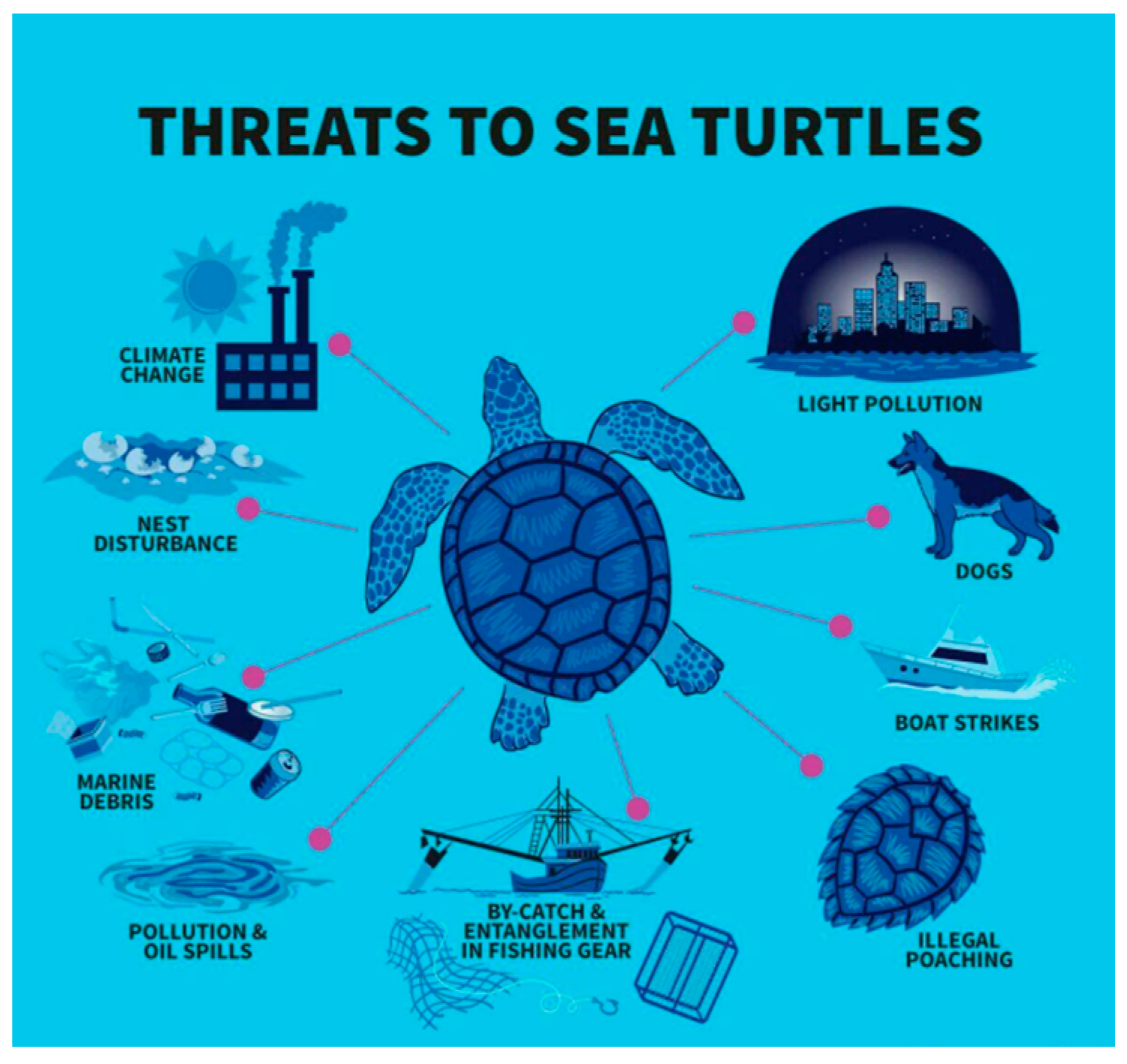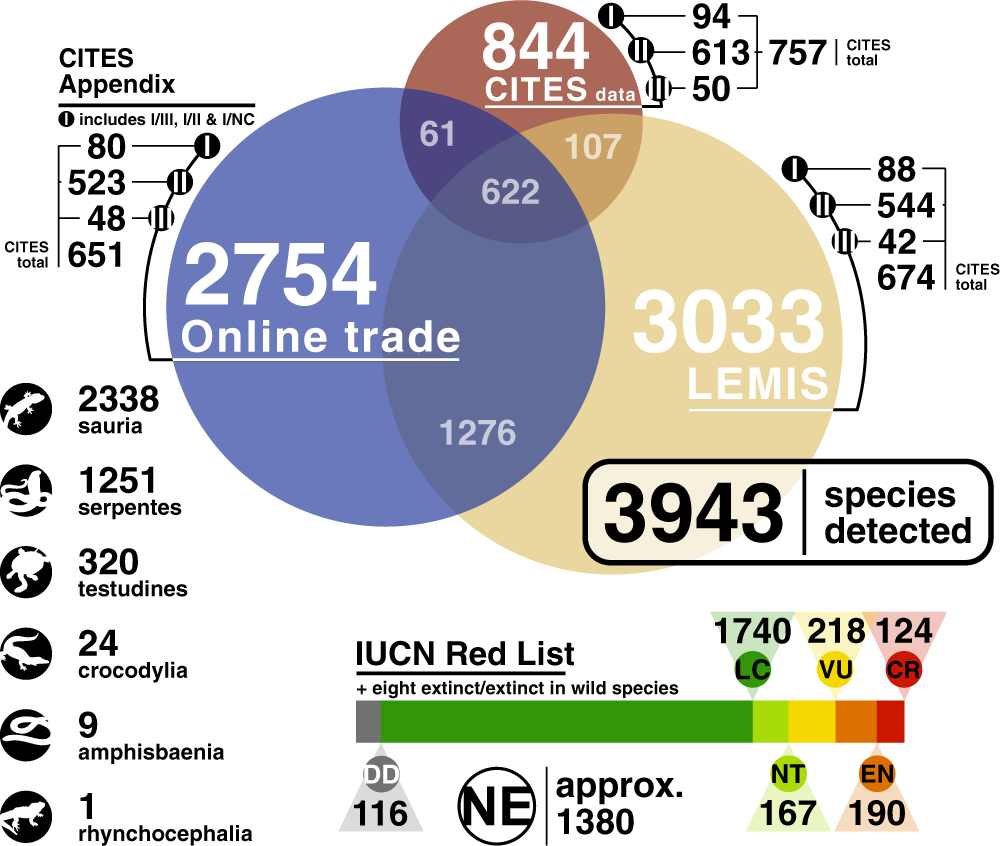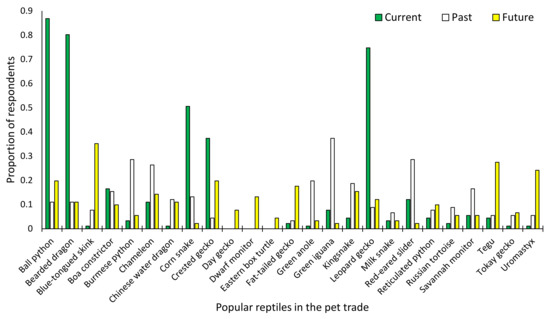Contents
- I. Introduction
- II. Types of Pollution Affecting Reptiles
- III. Case Studies on Pollution and Reptile Populations
- IV. Factors Influencing the Vulnerability of Reptiles to Pollution
- V. Strategies for Mitigating the Impact of Pollution on Reptiles
- VI. Best Practices for Monitoring Reptile Populations in Polluted Areas
- VII. Case Studies on Successful Reptile Conservation Programs
I. Introduction
Welcome to the fascinating world of reptiles! These cold-blooded creatures have captivated humans for centuries with their unique characteristics and behaviors. However, the impact of pollution on reptile populations is a growing concern that needs our attention.
In recent years, pollution levels have reached alarming heights, affecting various ecosystems worldwide. Reptiles, being highly sensitive to environmental changes, are particularly vulnerable to the harmful effects of pollution. This article aims to shed light on the detrimental consequences of pollution on reptile populations and the urgent need for conservation efforts.
From industrial waste to chemical runoff, pollution takes many forms and infiltrates reptile habitats, disrupting their delicate balance. The consequences can be devastating, leading to habitat destruction, reduced reproductive success, and even population decline. By understanding the specific ways pollution affects reptiles, we can take steps to mitigate its impact and protect these remarkable creatures.
Throughout this article, we will explore the various types of pollution that pose a threat to reptiles, including air pollution, water pollution, and habitat destruction. We will delve into the specific effects of pollution on reptile physiology, behavior, and reproductive patterns. Furthermore, we will discuss the role of human activities in exacerbating pollution levels and the importance of adopting sustainable practices.
Join us on this journey as we delve into the intricate relationship between pollution and reptile populations. Together, we can work towards a cleaner and safer environment for reptiles to thrive and ensure their survival for generations to come.
II. Types of Pollution Affecting Reptiles

A. Air Pollution
Air pollution is a significant environmental issue that has detrimental effects on reptiles. It is caused by various sources, including industrial emissions, vehicle exhaust, and the burning of fossil fuels. These activities release harmful pollutants into the air, such as carbon monoxide, sulfur dioxide, nitrogen oxides, and particulate matter.
Reptiles, like other living organisms, rely on clean air for their survival and well-being. However, when exposed to high levels of air pollution, reptiles can experience a range of adverse effects. For example, pollutants can irritate their respiratory systems, leading to respiratory diseases and reduced lung function. Additionally, air pollution can impair their ability to navigate and find food, as it can affect their sense of smell and vision.
B. Water Pollution
Water pollution poses a significant threat to reptiles and their habitats. It occurs when contaminants, such as chemicals, sewage, and agricultural runoff, enter water bodies, including rivers, lakes, and oceans. These pollutants can have severe consequences for reptiles, as they rely on clean and unpolluted water for various aspects of their lives.
When reptiles are exposed to water pollution, it can lead to detrimental effects on their health and survival. For instance, certain chemicals present in polluted water can disrupt their endocrine systems, affecting their reproductive capabilities and hormone levels. Additionally, water pollution can lead to the accumulation of toxins in their bodies, which can cause organ damage and impair their immune systems.
C. Soil Pollution
Soil pollution is another form of environmental degradation that affects reptiles. It occurs when harmful substances, such as heavy metals, pesticides, and industrial waste, contaminate the soil. Reptiles, particularly those that live in or near the soil, are vulnerable to the effects of soil pollution.
When reptiles come into contact with polluted soil, it can have detrimental effects on their health and overall well-being. For example, exposure to heavy metals, such as lead and mercury, can lead to neurological damage and reproductive issues. Additionally, the presence of pesticides in the soil can disrupt their hormonal balance and impair their immune systems.
III. Case Studies on Pollution and Reptile Populations

A. Case study 1: Impact of air pollution on reptiles in urban areas
Air pollution is a pressing issue in urban areas, and its impact on reptile populations has been a cause for concern. A recent study conducted by the Environmental Research Institute aimed to investigate the effects of air pollution on reptiles and understand their adaptations to such conditions.
The findings of the study revealed that air pollution has a significant negative impact on reptiles in urban areas. The high levels of pollutants, such as nitrogen dioxide and particulate matter, were found to cause respiratory problems and impair the overall health of reptiles. The study also observed a decline in reptile populations in areas with high pollution levels.
Reptiles have shown remarkable adaptations to cope with air pollution. For instance, some species have developed specialized respiratory systems that allow them to filter out pollutants and minimize their negative effects. Additionally, reptiles have exhibited changes in behavior, such as altered feeding patterns and habitat preferences, to avoid areas with high pollution levels.
B. Case study 2: Effects of water pollution on aquatic reptiles
Water pollution poses a significant threat to aquatic reptiles, and a study conducted by the Marine Conservation Society aimed to investigate the effects of water pollution on these species. The study focused on understanding the changes in behavior and reproductive patterns of aquatic reptiles in response to water pollution.
The study’s findings indicated that water pollution has detrimental effects on aquatic reptiles. Pollutants such as heavy metals, pesticides, and plastic waste have been found to contaminate water bodies, leading to various health issues in reptiles. These pollutants can disrupt hormonal balance, impair reproductive functions, and weaken the immune system of aquatic reptiles.
As a result of water pollution, aquatic reptiles have exhibited changes in behavior and reproductive patterns. Some species have altered their migration routes or breeding grounds to avoid polluted areas. Others have shown reduced reproductive success or delayed sexual maturity due to the negative impact of water pollution on their reproductive systems.
IV. Factors Influencing the Vulnerability of Reptiles to Pollution

Reptiles, like many other species, are facing numerous threats due to pollution. In this section, we will explore the factors that influence the vulnerability of reptiles to pollution, including habitat destruction and fragmentation, as well as climate change. Understanding these factors is crucial for developing effective conservation strategies to protect reptile populations.
A. Habitat destruction and fragmentation
Habitat destruction and fragmentation have a significant impact on reptiles and their ability to cope with pollution. When their natural habitats are destroyed or fragmented, reptiles face numerous challenges in finding suitable resources for survival. This includes food, shelter, and breeding sites.
1. How habitat loss affects reptiles’ ability to cope with pollution
When reptiles lose their natural habitats due to human activities such as deforestation, urbanization, or agriculture, they become more vulnerable to pollution. Without a proper habitat, they are unable to find safe and clean environments to live in. This makes them more susceptible to the harmful effects of pollutants, which can lead to reduced reproductive success, impaired immune systems, and even death.
2. Examples of habitat destruction and its impact on reptile populations
There are numerous examples of habitat destruction and its impact on reptile populations. For instance, the destruction of wetlands for urban development has led to the decline of many reptile species that rely on these habitats for breeding and foraging. Similarly, the clearing of forests for agriculture has resulted in the loss of critical habitats for arboreal reptiles like tree snakes and lizards.
B. Climate change
Climate change is another significant factor that interacts with pollution to affect reptiles. Rising temperatures, changing rainfall patterns, and extreme weather events associated with climate change can exacerbate the impacts of pollution on reptile populations.
1. How climate change interacts with pollution to affect reptiles
Climate change can directly impact reptiles by altering their natural habitats. For example, rising temperatures can lead to changes in vegetation patterns, affecting the availability of food and shelter for reptiles. Additionally, climate change can indirectly affect reptiles by altering the distribution and abundance of prey species, which can have cascading effects on reptile populations.
When combined with pollution, the effects of climate change can be even more detrimental. For instance, pollutants can accumulate in reptiles’ bodies, impairing their ability to regulate body temperature and compromising their overall health and survival. This can further exacerbate the impacts of climate change, making reptiles more susceptible to heat stress and other climate-related challenges.
2. Case studies on the combined effects of climate change and pollution
Several case studies have highlighted the combined effects of climate change and pollution on reptile populations. One such example is the impact of ocean acidification on sea turtles. As carbon dioxide levels rise in the atmosphere, the oceans absorb more CO2, leading to increased acidity. This can negatively affect the growth and development of sea turtle hatchlings, making them more vulnerable to predation and reducing their chances of survival.
Another example is the interaction between pollution and rising temperatures on freshwater turtle populations. Pollutants, such as pesticides and heavy metals, can accumulate in turtles’ tissues, impairing their immune systems and reproductive capabilities. When combined with higher temperatures, these pollutants can have even more severe effects, leading to population declines and local extinctions.
V. Strategies for Mitigating the Impact of Pollution on Reptiles

Reptiles are highly vulnerable to the negative effects of pollution, which can have devastating consequences on their populations. However, there are several strategies that can be implemented to mitigate the impact of pollution on reptiles. These strategies include conservation efforts and legislative measures.
A. Conservation efforts
1. Habitat restoration and protection
Habitat loss and degradation due to pollution are major threats to reptile populations. Therefore, one of the most effective strategies for mitigating the impact of pollution on reptiles is habitat restoration and protection. This involves restoring degraded habitats to their natural state and implementing measures to protect existing habitats from further pollution.
Restoration efforts can include reforestation, wetland restoration, and the removal of invasive species that contribute to pollution. By restoring and protecting habitats, we can provide reptiles with suitable environments free from pollution, allowing their populations to recover and thrive.
2. Reducing pollution sources
Another crucial aspect of mitigating the impact of pollution on reptiles is reducing pollution sources. This can be achieved through various means, such as implementing stricter regulations on industrial emissions, promoting the use of cleaner energy sources, and encouraging responsible waste management practices.
By reducing pollution sources, we can minimize the amount of pollutants entering reptile habitats, thereby reducing their exposure and the negative effects on their health and reproductive success. This approach requires collaboration between government agencies, industries, and individuals to implement and enforce effective pollution reduction measures.
B. Legislative measures
1. Environmental regulations and policies
Legislation plays a crucial role in mitigating the impact of pollution on reptiles. Governments can enact and enforce environmental regulations and policies that aim to reduce pollution levels and protect reptile habitats. These regulations can include limits on pollutant emissions, restrictions on harmful practices, and requirements for environmental impact assessments.
By implementing strong environmental regulations and policies, governments can create a framework that promotes responsible environmental practices and holds polluters accountable for their actions. This helps ensure that reptile habitats are protected and pollution levels are kept in check.
2. Enforcement and penalties for polluters
In addition to regulations, effective enforcement and penalties for polluters are essential for mitigating the impact of pollution on reptiles. Governments should allocate resources to monitor and enforce compliance with environmental regulations, and impose significant penalties on those who violate them.
By holding polluters accountable for their actions, we send a clear message that pollution will not be tolerated, and there are consequences for harming reptile populations and their habitats. This serves as a deterrent and encourages industries and individuals to adopt cleaner practices and reduce pollution levels.
VI. Best Practices for Monitoring Reptile Populations in Polluted Areas
Monitoring reptile populations in polluted areas is crucial for understanding the impact of pollution on these species and implementing effective conservation measures. In this section, we will explore the best practices for monitoring reptile populations in polluted areas, including field survey techniques and the use of remote sensing technology.
A. Field survey techniques
1. Transect surveys
Transect surveys are a commonly used method for monitoring reptile populations in polluted areas. This technique involves walking along predetermined transects and recording the presence and abundance of reptiles. Transects should be carefully selected to cover a representative range of habitats within the polluted area.
During transect surveys, it is important to be observant and patient. Reptiles can be elusive and may require careful searching to be detected. Look for signs such as tracks, shed skins, or burrows, as these can indicate the presence of reptiles even when they are not directly observed.
When conducting transect surveys, it is also important to record environmental variables such as temperature, humidity, and vegetation type. These variables can provide valuable context for understanding reptile distribution and abundance in relation to pollution levels.
2. Mark-recapture methods
Mark-recapture methods are another valuable tool for monitoring reptile populations in polluted areas. This technique involves capturing and marking individual reptiles, then releasing them back into the wild. Subsequent recaptures allow researchers to estimate population size and track individual movements and survival rates.
When using mark-recapture methods in polluted areas, it is important to handle reptiles with care to minimize stress and injury. Use appropriate capture techniques and equipment, and follow ethical guidelines for handling and marking reptiles. It is also important to consider the potential effects of pollution on reptile behavior and physiology when interpreting mark-recapture data.
B. Use of remote sensing technology
1. Satellite imagery for monitoring habitat changes
Satellite imagery can be a powerful tool for monitoring habitat changes in polluted areas and assessing their impact on reptile populations. High-resolution satellite images can provide detailed information about land cover, vegetation density, and other habitat characteristics.
By comparing satellite images taken at different time points, researchers can identify changes in habitat quality and extent. This information can help identify areas where pollution is causing habitat degradation and guide conservation efforts. Satellite imagery can also be used to monitor the recovery of habitats following pollution remediation.
2. Drones for assessing pollution levels
Drones equipped with specialized sensors can be used to assess pollution levels in reptile habitats. These sensors can detect various pollutants, including heavy metals, pesticides, and air pollutants. By flying drones over polluted areas, researchers can collect real-time data on pollution levels and map their spatial distribution.
This information can help identify hotspots of pollution and prioritize conservation actions. Drones can also be used to monitor the effectiveness of pollution control measures and track changes in pollution levels over time.
VII. Case Studies on Successful Reptile Conservation Programs
A. Case study 1: Reintroduction of endangered reptile species in a polluted area
One of the most significant challenges in conservation is the restoration of endangered reptile populations in polluted areas. In this case study, we will explore the goals and objectives of a program that successfully reintroduced endangered reptile species in such an environment.
1. Goals and objectives of the program
The primary goal of this program was to restore the population of endangered reptile species in a polluted area. To achieve this, the program aimed to:
- Identify the most suitable reptile species for reintroduction based on their adaptability to polluted environments.
- Implement measures to reduce pollution levels and create a more suitable habitat for the reintroduced reptiles.
- Monitor the population dynamics of the reintroduced reptiles and assess their reproductive success.
- Educate the local community about the importance of reptile conservation and involve them in the restoration efforts.
2. Monitoring and evaluation of the reintroduction process
The success of the reintroduction program relied on continuous monitoring and evaluation. The program implemented the following strategies:
- Regular surveys to assess the population size and distribution of the reintroduced reptiles.
- Monitoring of environmental parameters such as water quality, air pollution levels, and habitat conditions.
- Assessment of the reproductive success of the reintroduced reptiles through nest monitoring and tracking of hatchling survival rates.
- Engagement of local communities in citizen science initiatives to collect data and contribute to the monitoring efforts.
B. Case study 2: Community-led conservation initiatives for reptiles in polluted habitats
Community-led conservation initiatives have proven to be effective in protecting reptiles in polluted habitats. This case study explores the engagement of local communities in conservation efforts and the positive outcomes and lessons learned.
1. Engagement of local communities in conservation efforts
The success of this case study was driven by the active involvement of local communities in conservation efforts. The initiatives included:
- Collaboration with local schools and educational institutions to raise awareness about reptile conservation and pollution issues.
- Organizing community clean-up events to reduce pollution levels in reptile habitats.
- Establishing community-led monitoring programs to track reptile populations and document their behavior and habitat preferences.
- Providing training and resources to local community members to actively participate in conservation activities.
2. Positive outcomes and lessons learned
The community-led conservation initiatives resulted in several positive outcomes:
- An increase in public awareness and understanding of the importance of reptile conservation and pollution mitigation.
- Improved habitat conditions for reptiles through community-led pollution reduction efforts.
- An increase in the population size of endangered reptile species in the polluted habitats.
- Enhanced community engagement and ownership of conservation initiatives, leading to long-term sustainability.
The key lessons learned from this case study include the importance of community involvement, education, and empowerment in achieving successful reptile conservation in polluted habitats.
By implementing these case studies, we can learn valuable lessons and strategies for successful reptile conservation in polluted areas. The reintroduction of endangered reptile species and community-led initiatives have shown promising results in restoring reptile populations and mitigating the impact of pollution on their habitats.
